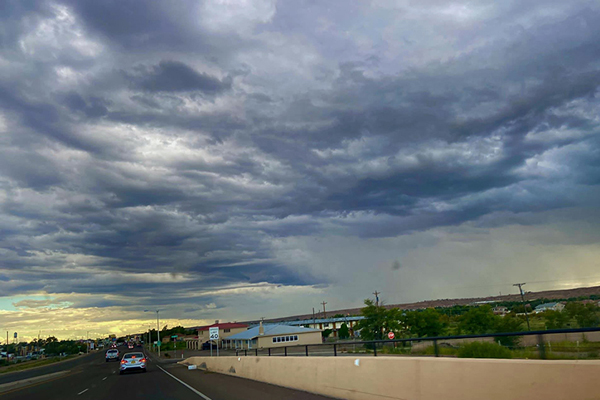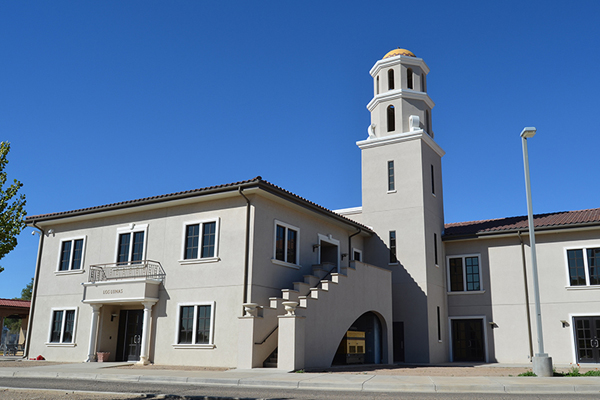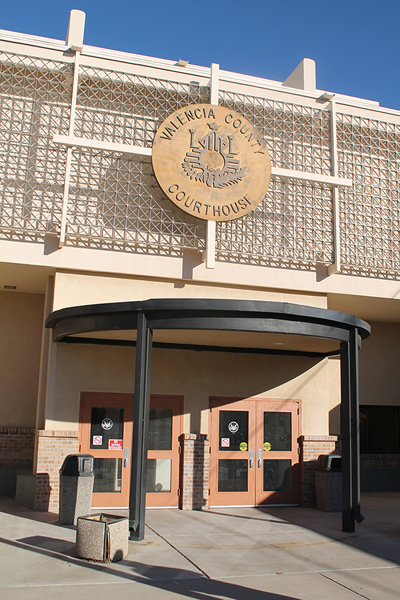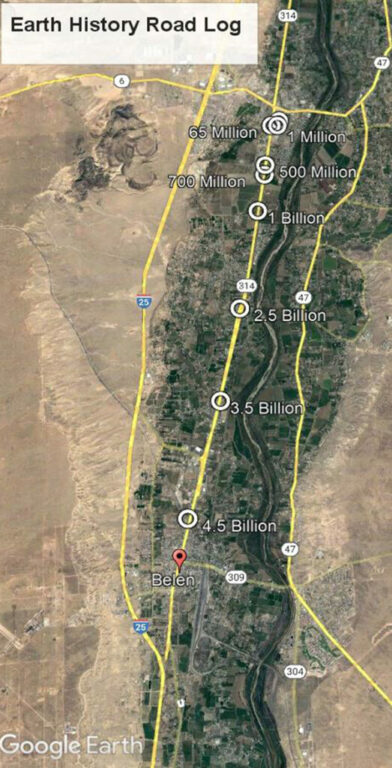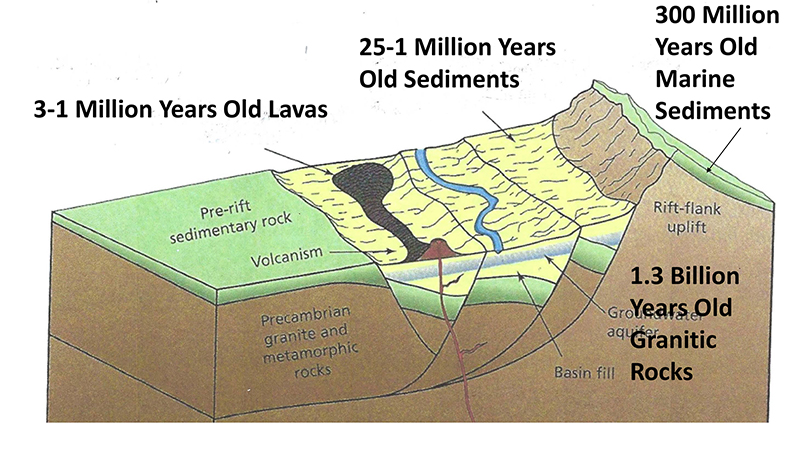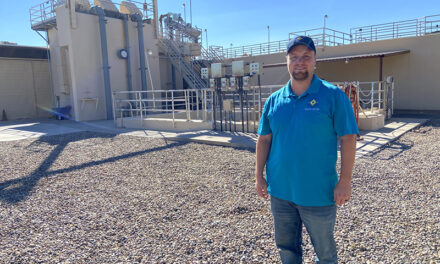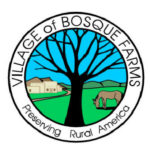La Vida
You are invited to take a 4.5 miles drive from Belen to the Valencia County administration building in Los Lunas to experience Earth’s history.
The distance driven from Belen to Los Lunas will serve to illustrate the scale of the long history of Earth, with each 10 feet driven representing one million years in Earth’s history. We will point out when the rocks found in the county were formed.
Starting on Main Street in Belen, heading north to the county building in Los Lunas, N.M. 314 will take you through 4.5 billion years of Earth history.
As northbound Main Street in Belen passes over the railroad tracks, the journey starts with the Earth forming 4,500 million years ago from a cloud of dust and gas around the sun. Earth was initially molten due to extreme volcanism and frequent collisions with other bodies.
Eventually, the outer layer of the planet cooled to form a solid crust. The moon formed soon afterwards, possibly as a result of the impact of a large planetoid with the Earth with some of its mass merged with the Earth, and the rest ejected into space to form our moon. This is interpreted as the rocks on the moon were found to be very similar to some of the Earth rocks, requiring some common origin.
The moon was initially very close to Earth, forming huge tides and frequent eclipses. (The moon still gets more distant from Earth at a rate of about one inch per year).
As you drive north, the Earth’s crust cooled enough that continental plates began to form and about a mile north, just before Ned’s Pipe Supply (3.5 billion years ago), the first signs of life are recorded as fossil algae layers called stromatolites.
As you pass the Old Mill Farm and Ranch Supply store, representing about 2.5 billion years ago, a major change in Earth’s atmosphere and oceans occurred with the creation of oxygen-rich conditions, which increased biodiversity and also created an ozone-rich atmosphere that later offered protection from radiation and therefore allowed for life to thrive on land.
Driving about one more mile north, reaching Miller Road leading to the Agricultural Science Center, we reach one billion years ago in Earth history, when most landmasses formed a supercontinent called Rodinia, one of several supercontinents that occurred throughout Earth history. This is also the time that the granitic rocks that you can see to the east at the base of the Manzano Mountains are formed.
On the way farther north, as you approach Morris Road, about 750 to 580 million years ago, Earth will undergo several episodes of intense glaciations, where all of Earth surface may have been under ice, receiving the nickname “Snowball Earth.”
This was followed, as you reach Morris Road at about 500 million years old, by a surge of diverse life forms called the Cambrian explosion when more complex biological forms emerge.
From here to the Enchantment Little League fields, we reach the age of 375 million years, when fish started to crawl out to land, and 300 million years ago, when Valencia County was under a shallow sea and the limestone layers that cap the Manzano Mountains were deposited.
After the baseball fields, at 250 million years ago, time of a major extinction of life forms, we enter the age of dinosaurs, a period of very warm Earth lasting until 65 million years ago as we reach the Los Lunas Transportation Center.
As we pass the School of Dreams Academy at the 140 million years mark, North and South America started to separate from Europe and Africa, and flowering plants appear.
The Los Lunas Transportation Center represents the 65 million years ago catastrophe when a large meteorite struck the earth and caused the demise of all large dinosaurs (smaller dinosaurs survived as birds).
Turning right onto Courthouse Road, we enter the age of the mammals, then soon reach the 25 million years old point when the Rio Grande Rift started opening and sediments poured in from surrounding mountains to form the 10,000 feet thick sediments that form the llanos and the sediments you are driving on. The Rio Grande at this time of Rift opening, empties in a large closed lake that extends to Socorro.
As you turn left on Luna Avenue and approach the county building, we have reached the most recent million years of Earth history. Within 30-10 feet of the flagpole, the volcanic rocks of Tomé Hill, El Cerro de Los Lunas and Isleta are formed. The Rio Grande now flows all the way to the Gulf of Mexico.
Humans have evolved. About an inch from the flagpole, representing 15,000 years ago, horses become extinct in North America, and humans cross over from Asia and enter the Americas.
As you nearly touch the flagpole, Spaniards arrive in New Mexico and bring horses back to North America.
Beyond the flagpole is Earth’s future. With the documented climate change of the Earth today, we can expect future Earth to be warmer. Life will survive, just like dinosaurs thrived in the past hot and humid conditions.
